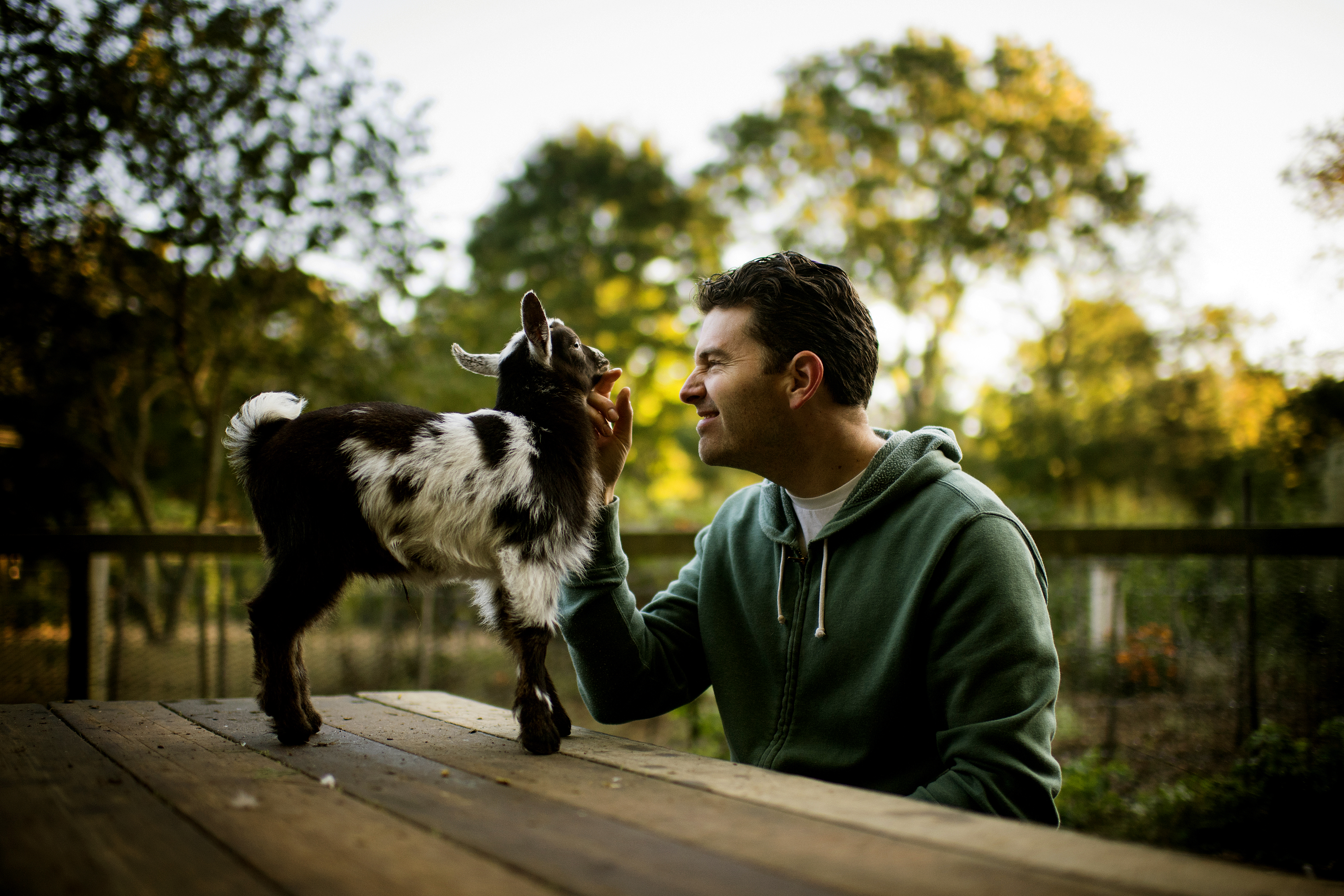Life on the hobby farm
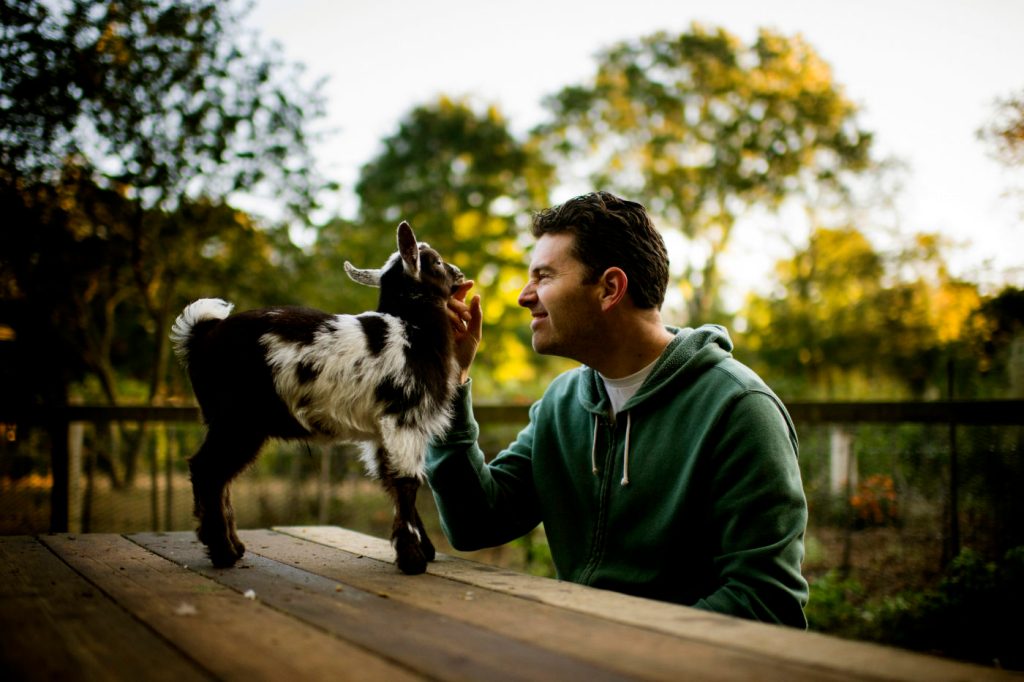
It was Aug. 26, 2014, and Ted Moss couldn’t sleep. It was a hot, humid evening, and the first that he and his husband, Nick Macke, were spending in their new home in Hingham, Massachusetts. But neither the lack of air conditioning nor the anxiety of living in a new space was what kept him stirring. It was the sheer excitement, the anticipation of what his new life would bring.

Moss—associate teaching professor of English at Northeastern—now owned a hobby farm with an orchard and a crew of animals including ducks, chickens, goats, geese, bunnies, and even bees. He couldn’t wait for morning, when he’d take the animals out for the first time and begin forming bonds with them as their new caretaker.
“I was so excited. We both were,” Moss recalls. “You think through the excitement of what it could be, and what it already is. We were taking pictures all day. ‘They’re ours now. I live here,’ I thought. ‘This is my wacky life.’”
‘The chickens are persnickety’
Fast-forward three years. It’s a chilly Tuesday morning in early October 2017, and Moss emerges from his house around 6:30 wearing a green hoodie and blue jeans. He steps outside and heads to the garage to grab feed bins for the animals and switch from gray sneakers to black Muck boots. From the road, you can only see the house and the driveway. You’d never know the wonders that rest beyond.
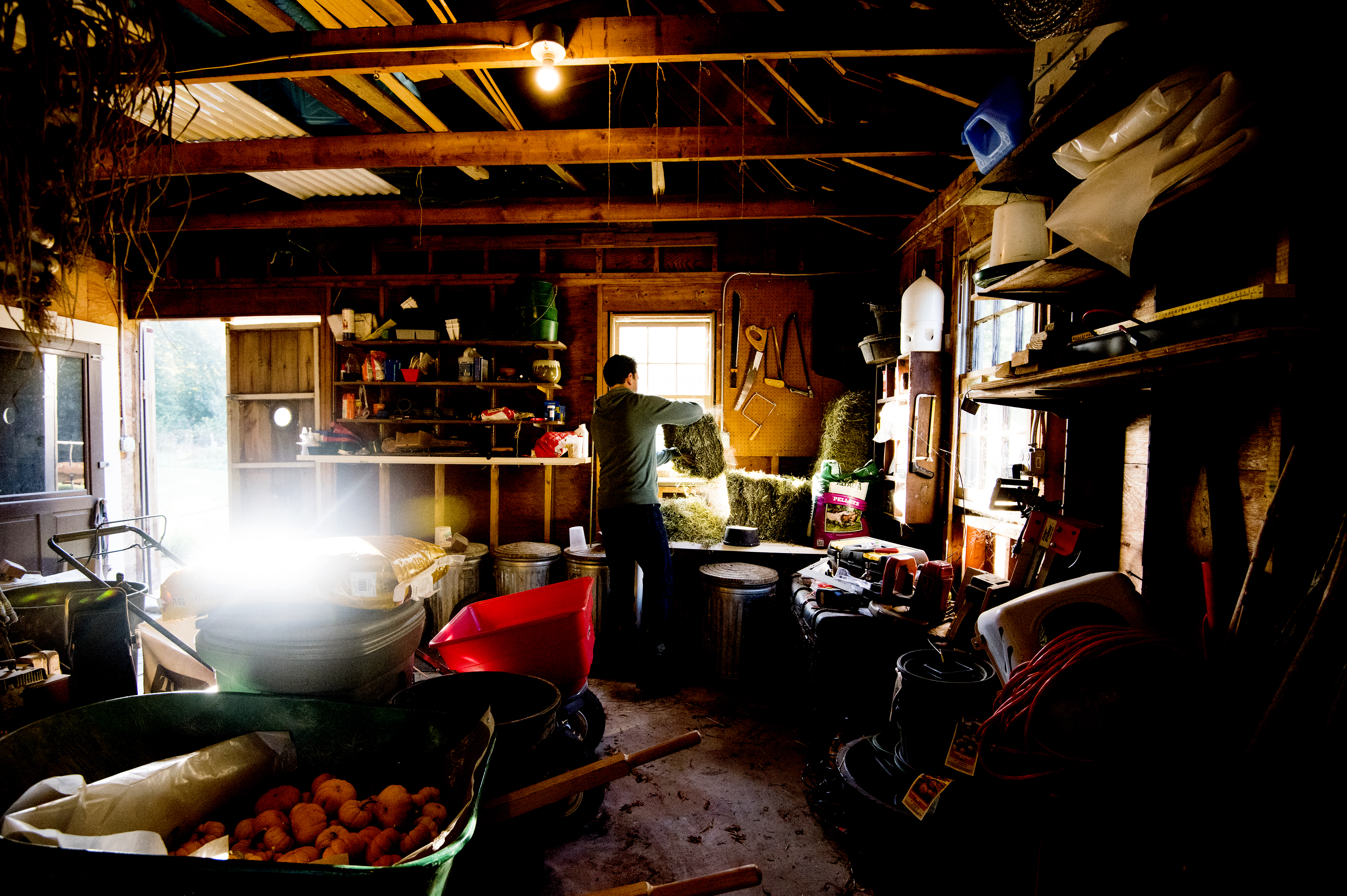
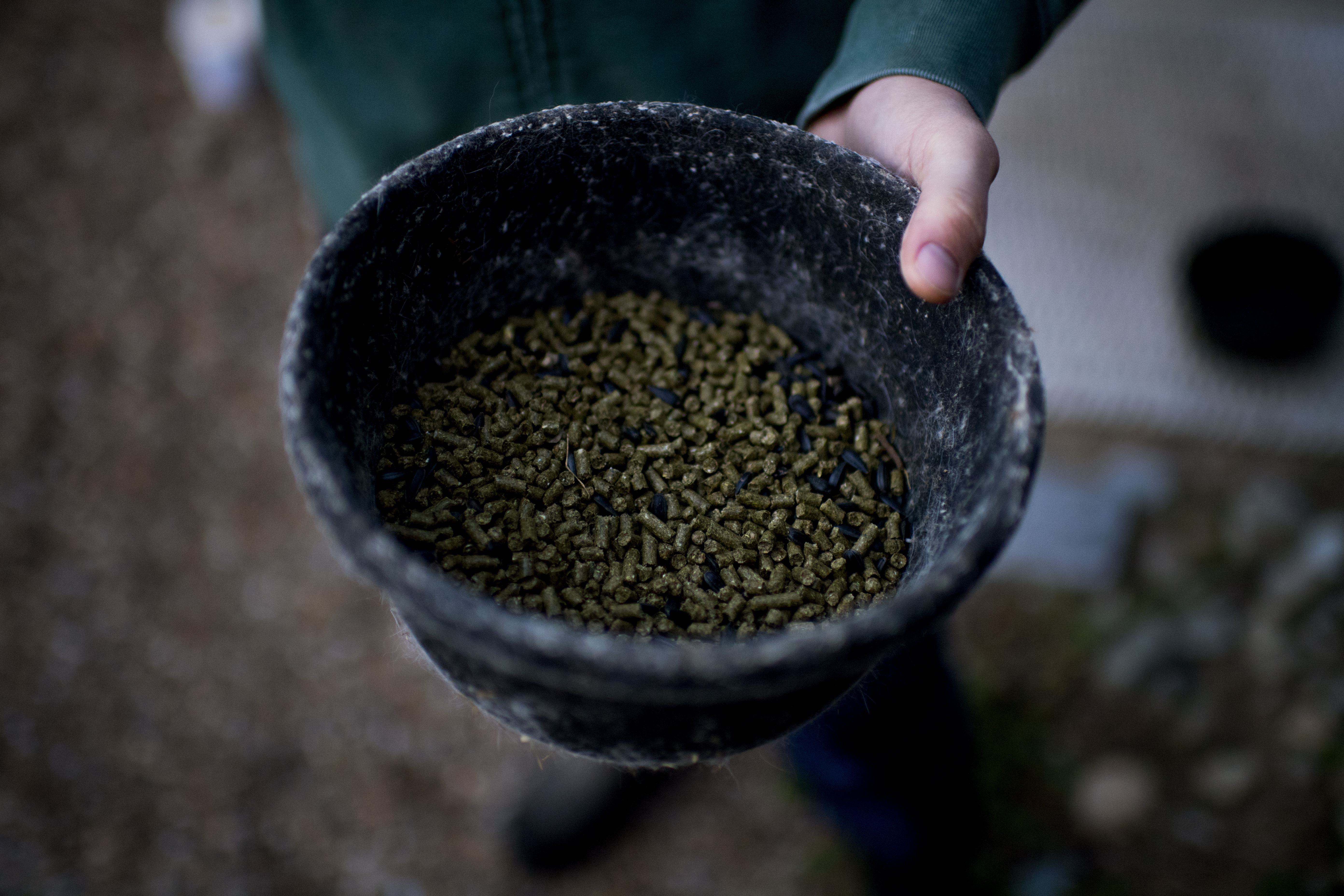
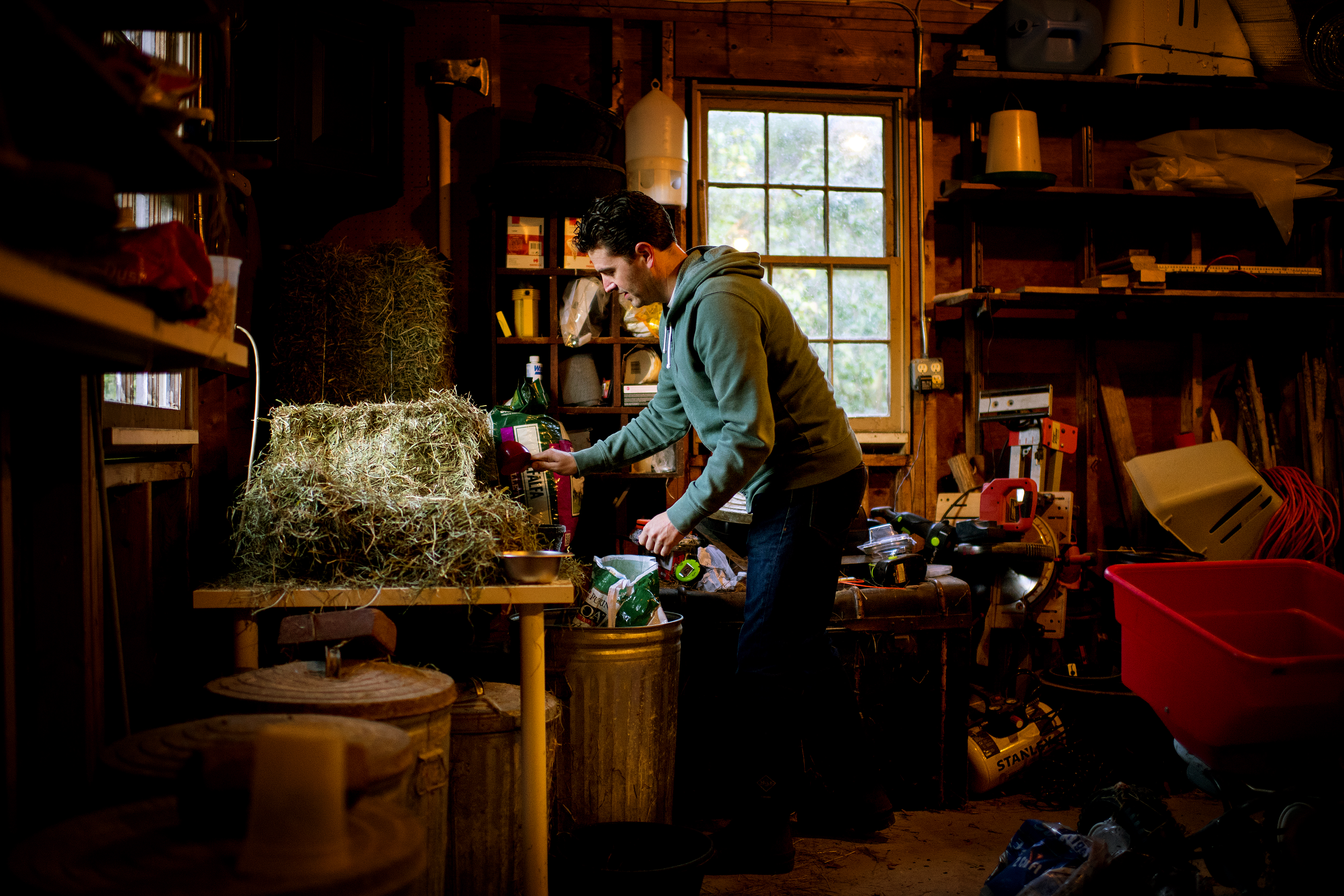
Moss walks through the garage and exits through a back door to the yard, where he greets Roxie and Velma, two bunnies whose coop is connected to the garage. Next, he heads down a white gravel walkway toward the back of the yard where the other animals live. On one side of the walkway is a large crab apple tree, and on the other is a beautiful parterre garden where he grows strawberries and herbs, among other foods. Moss presses the crab apples for juice, “and the geese love the leftovers.”
Patrolling the grounds is a Hemingway cat named Busby who saunters ahead of Moss and jumps up and walks along the fence surrounding the animals. “He’s the mayor of the place,” Moss says of Busby, whose fur is all black except for white on his paw and legs. “He knows the place inside and out.”
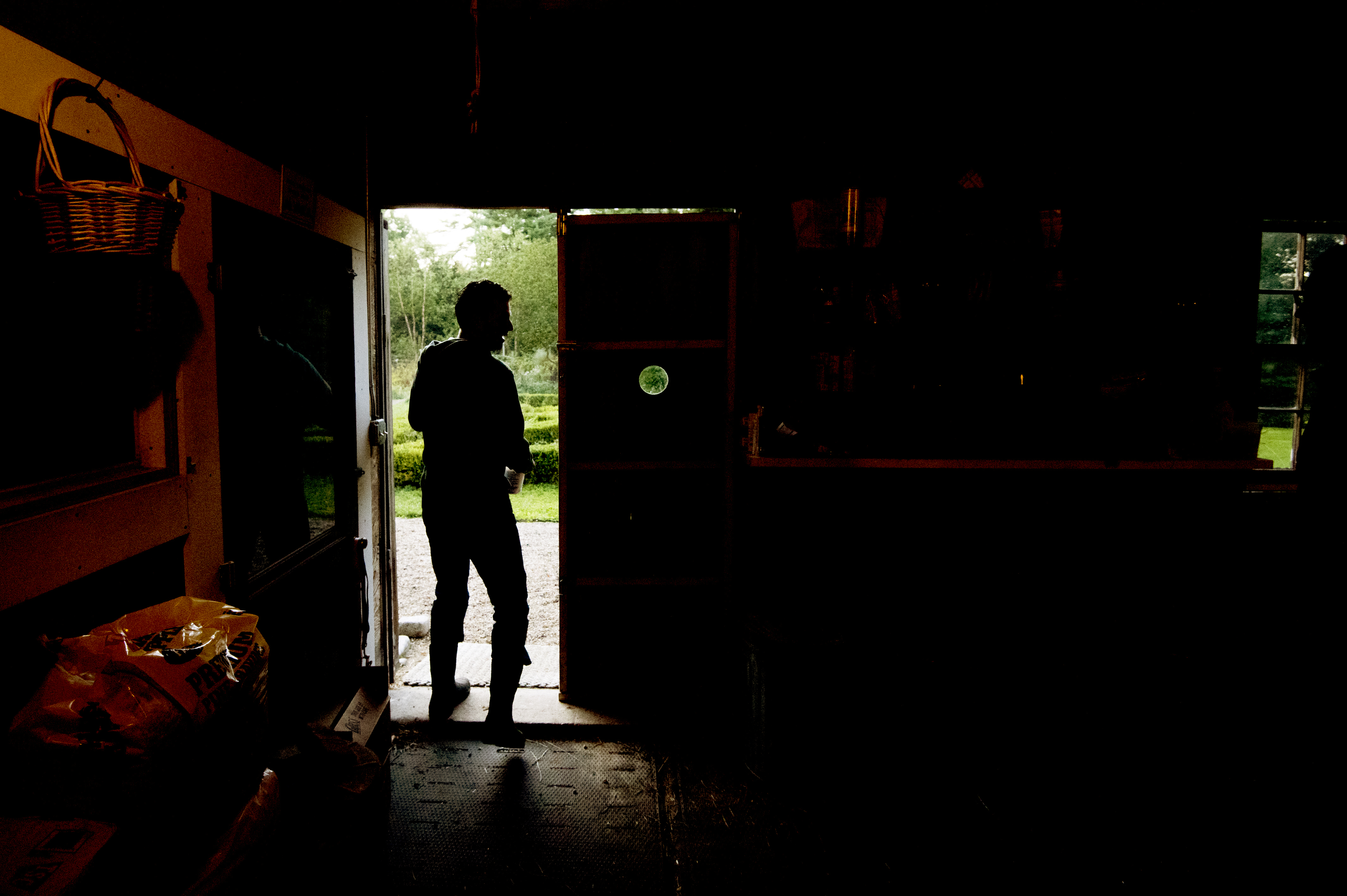
Moss opens the fence gate and heads toward the goat house to greet Penny, a Nigerian dwarf goat, who has recently given birth to two kids, Ruby and Lincoln. He lets them out first and then Husker, also a Nigerian dwarf, and Ivy, a Pygmy goat. It doesn’t take long for Husker and Lincoln to start horsing around with each other, jumping up and down and gently butting heads. Next, Moss lets out the chickens and geese, and finally the ducks. There are six ducks, all named after female country singers: Miranda, Dolly, Patsy, Reba, Loretta, and Emmylou—and they travel in a pack, always walking together. Then Moss fills a trough with fresh well water for the animals, sweeps up in the goat house, and tends to other tasks as part of his morning routine.
Moss doesn’t teach on Tuesdays, so he’s able to spend a bit more time out on the farm. On teaching days, he’s up at 6 a.m., lets the animals out by 6:45, and is usually back in the house by 7:15 and on the road by 7:30 to contend with the Route 3 traffic on the way to work. In the evening, the animals are fed before bedtime, which is typically when it gets dark. “The chickens,” Moss said, “are persnickety. It’s tough to get them into the coop if it’s too light.”
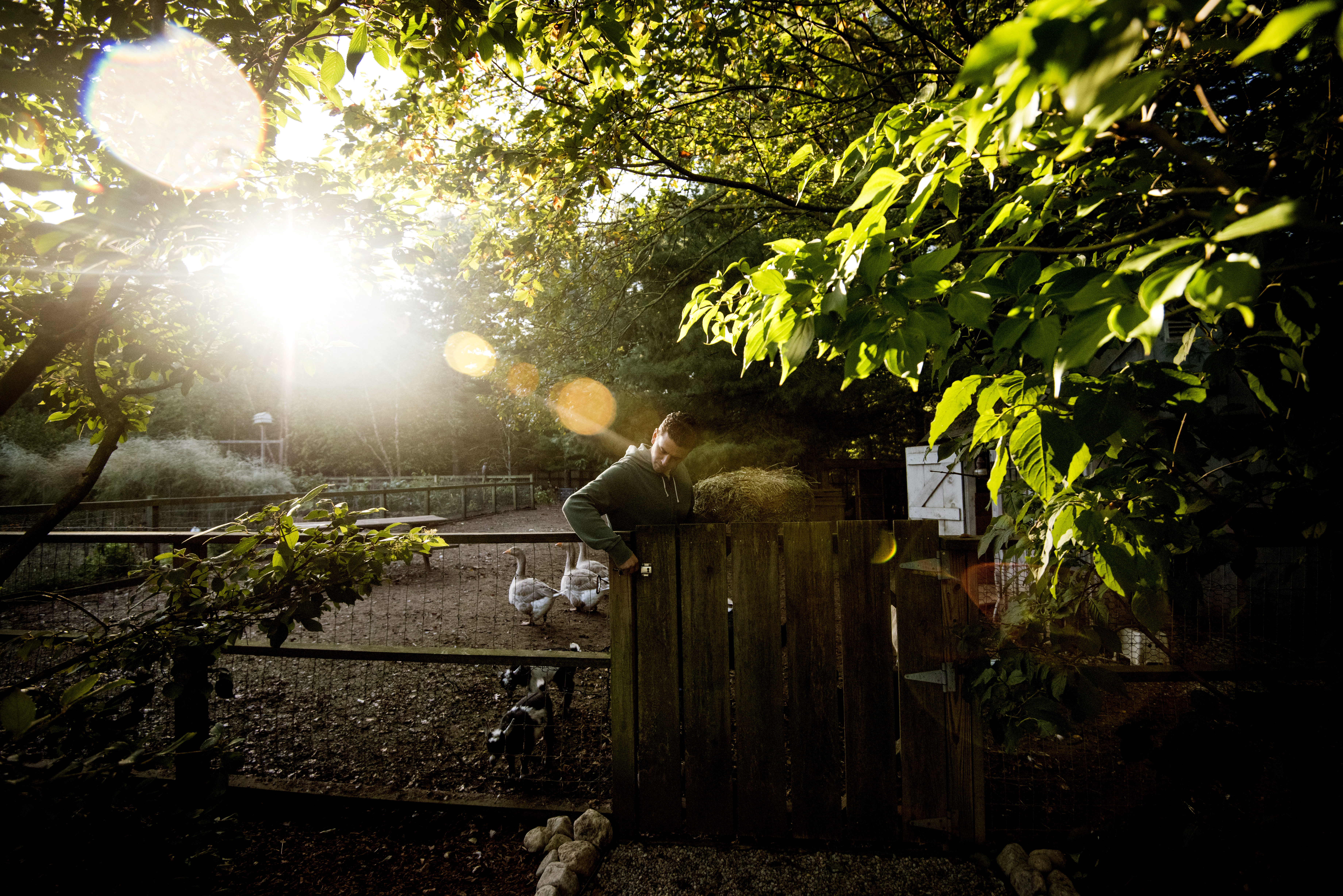
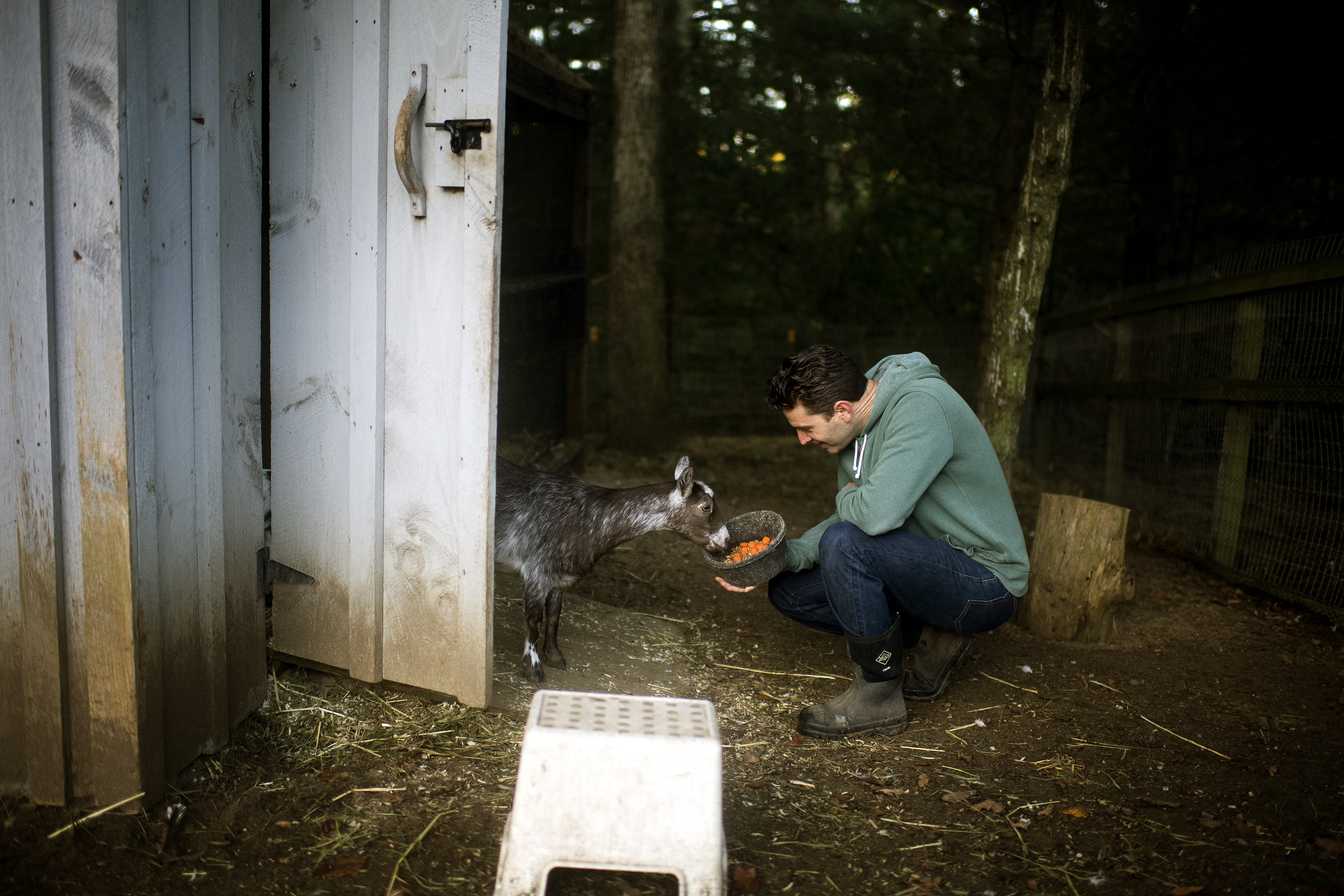
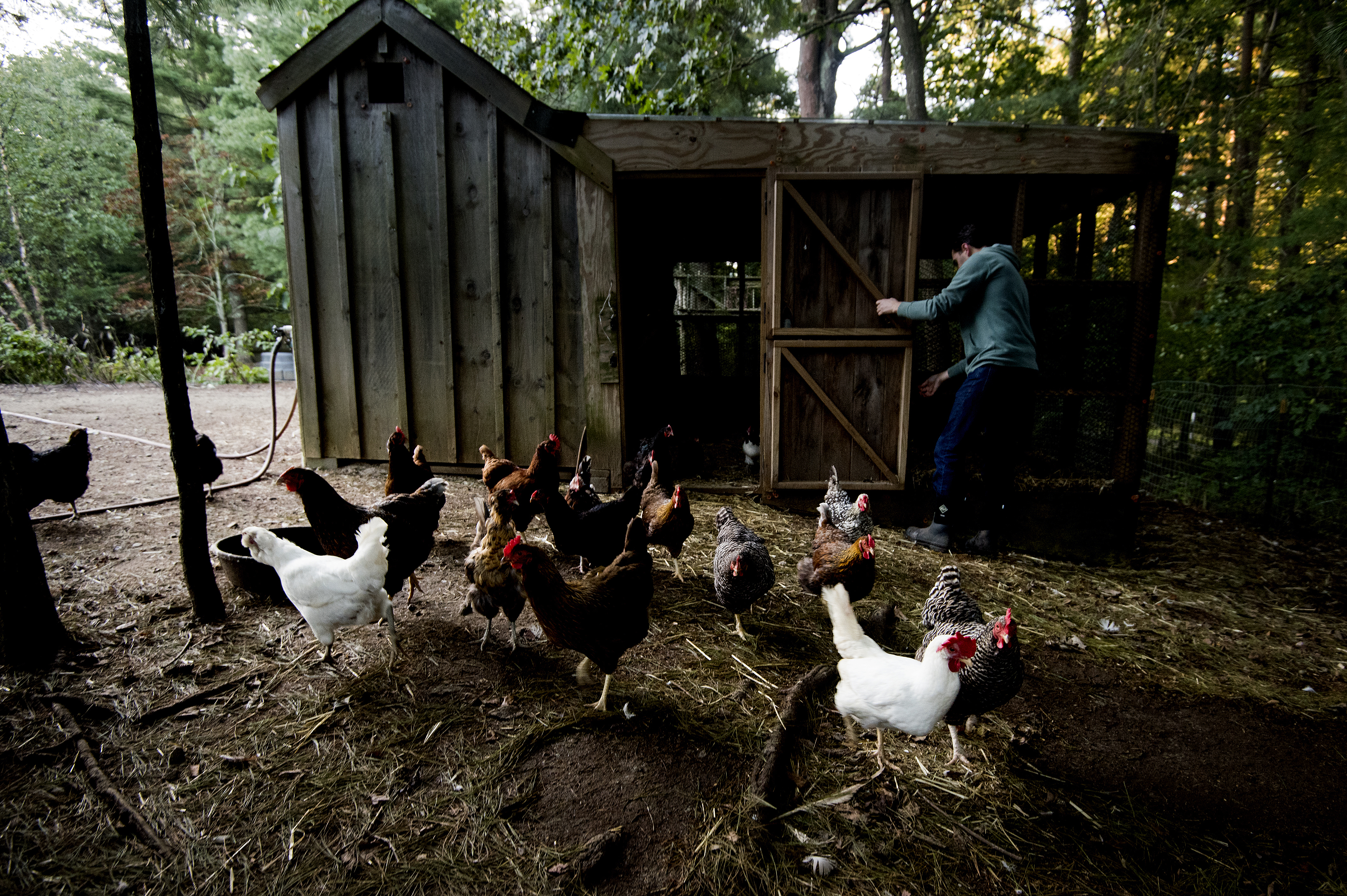
Fenced off from the animals is the orchard, where Moss grows a variety of fruits and vegetables he and Macke share with the animals. The goats love apples, carrots, and broccoli. The chickens, meanwhile, devour the sliced mini-pumpkins. This morning, he cuts up a large cucumber and tosses pieces to some of the animals, much to their delight. Brussels sprouts, kale, potatoes, and squash are among the other foods growing this fall.
Moss says it’s been challenging to learn the ins and outs of tending to the animals and the organic orchard—particularly in terms of maintenance and cleanliness. “We had no idea what we didn’t know,” Moss says. So they immersed themselves in books, DVDs, web articles, and YouTube videos to learn everything from animal care to gardening.
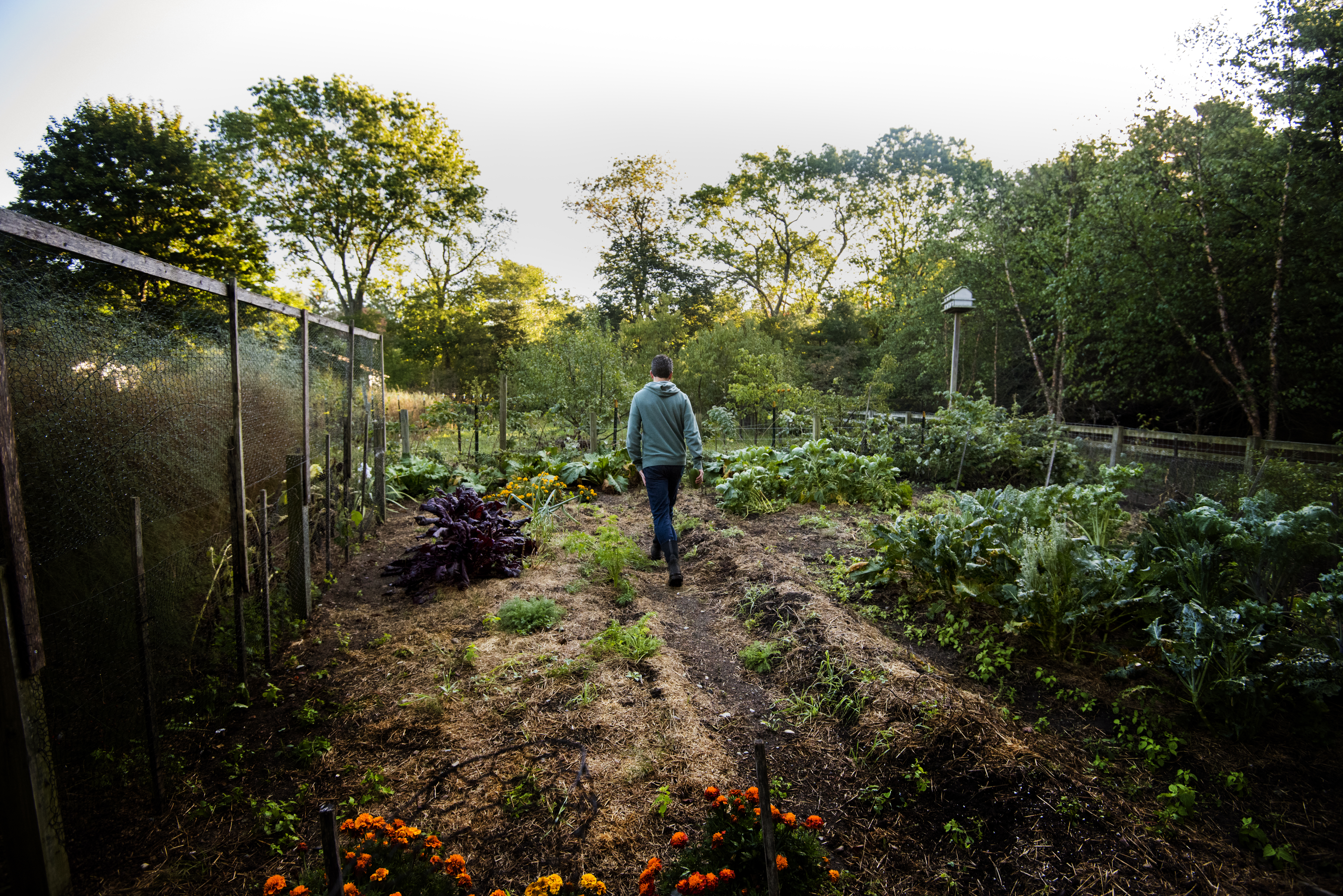
“A lot of it is trial and error and finding better and easier ways to do things,” Moss says. “Mostly it’s been fun. I never feel like going outside is a chore. It’s just so much a part of our daily lives. The challenge is thrilling and gratifying.”
He adds, “There is a bizarre rolodex of information I never thought I’d know.” One of those things is how to prepare for a goat to give birth.
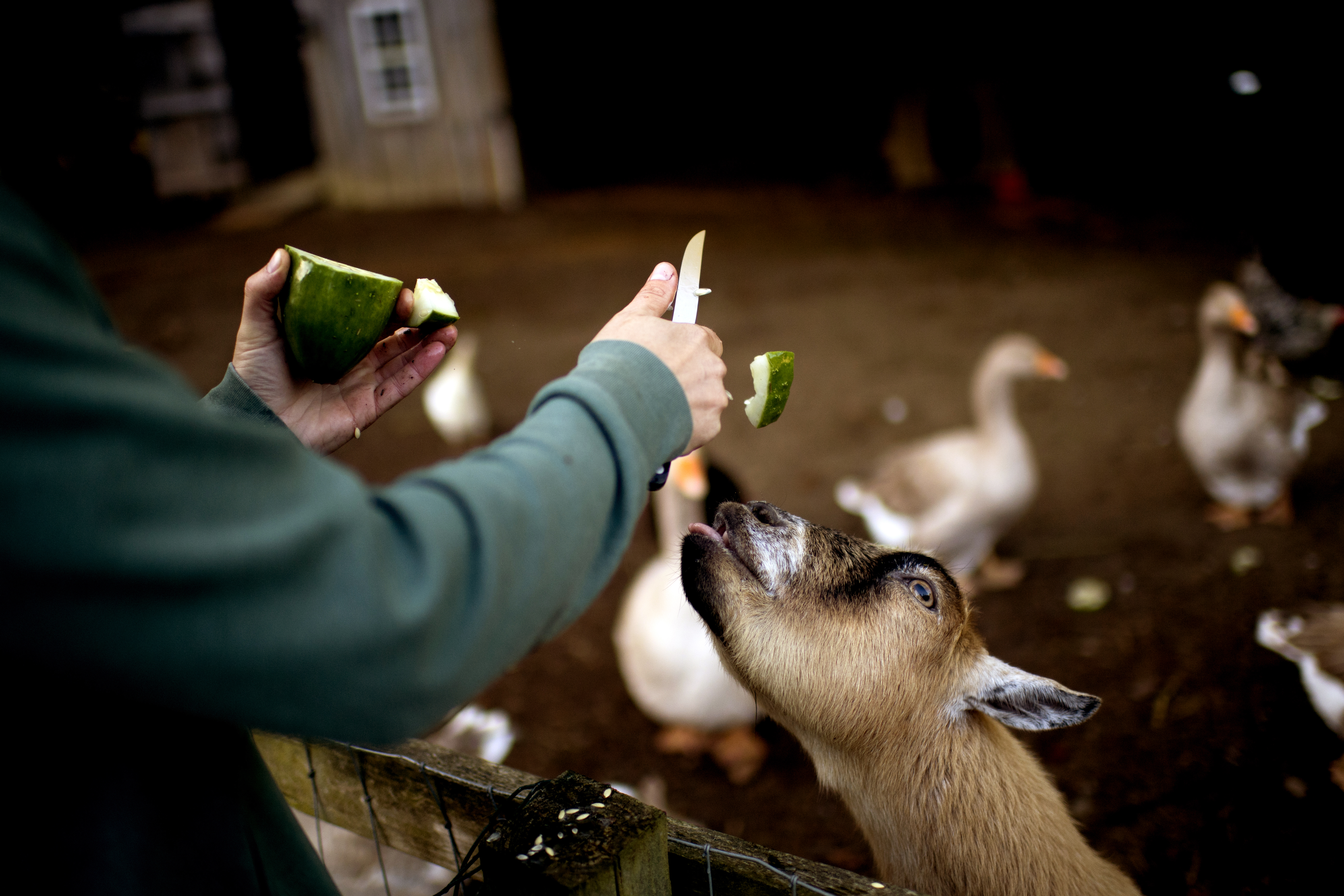
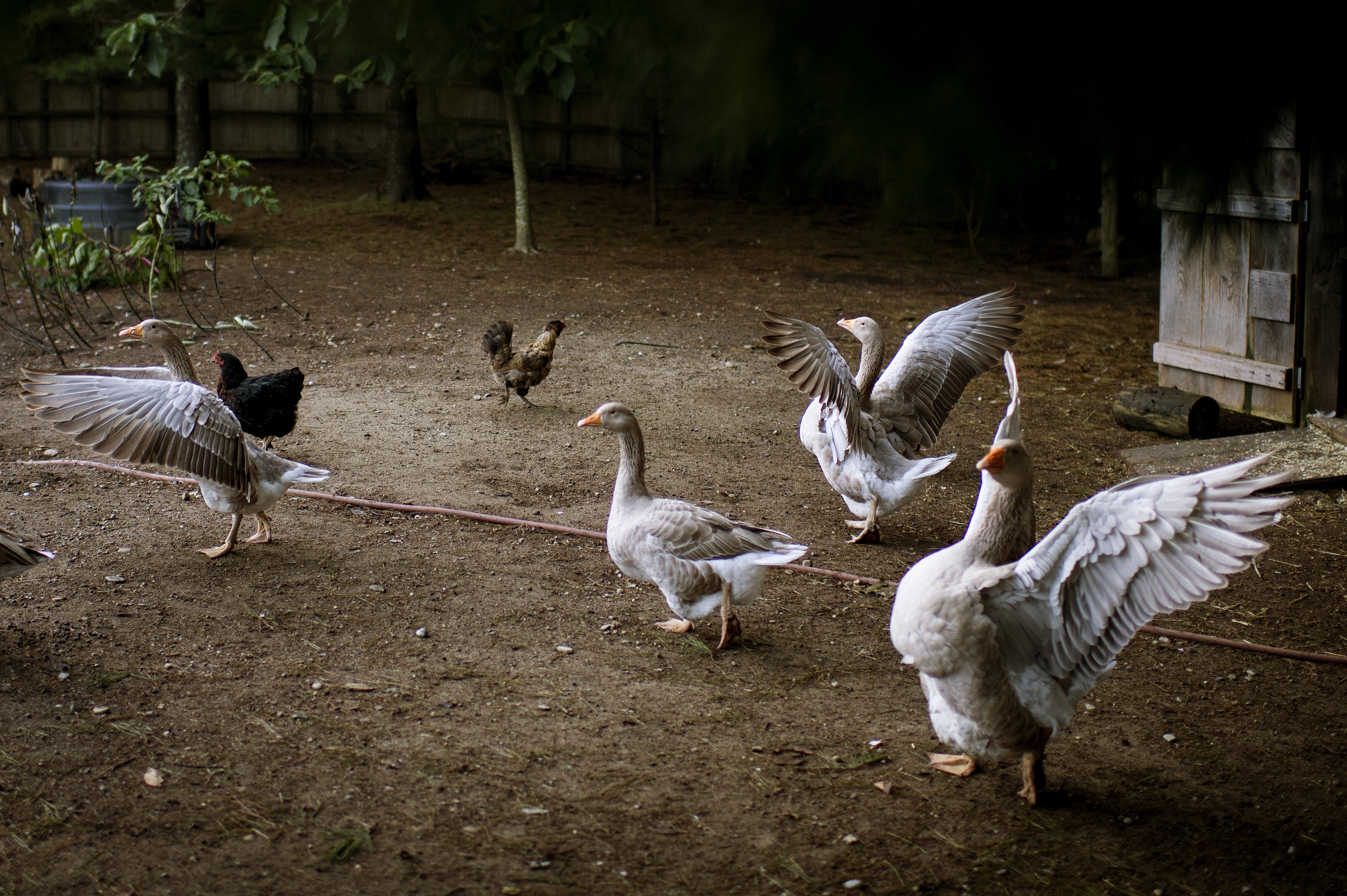
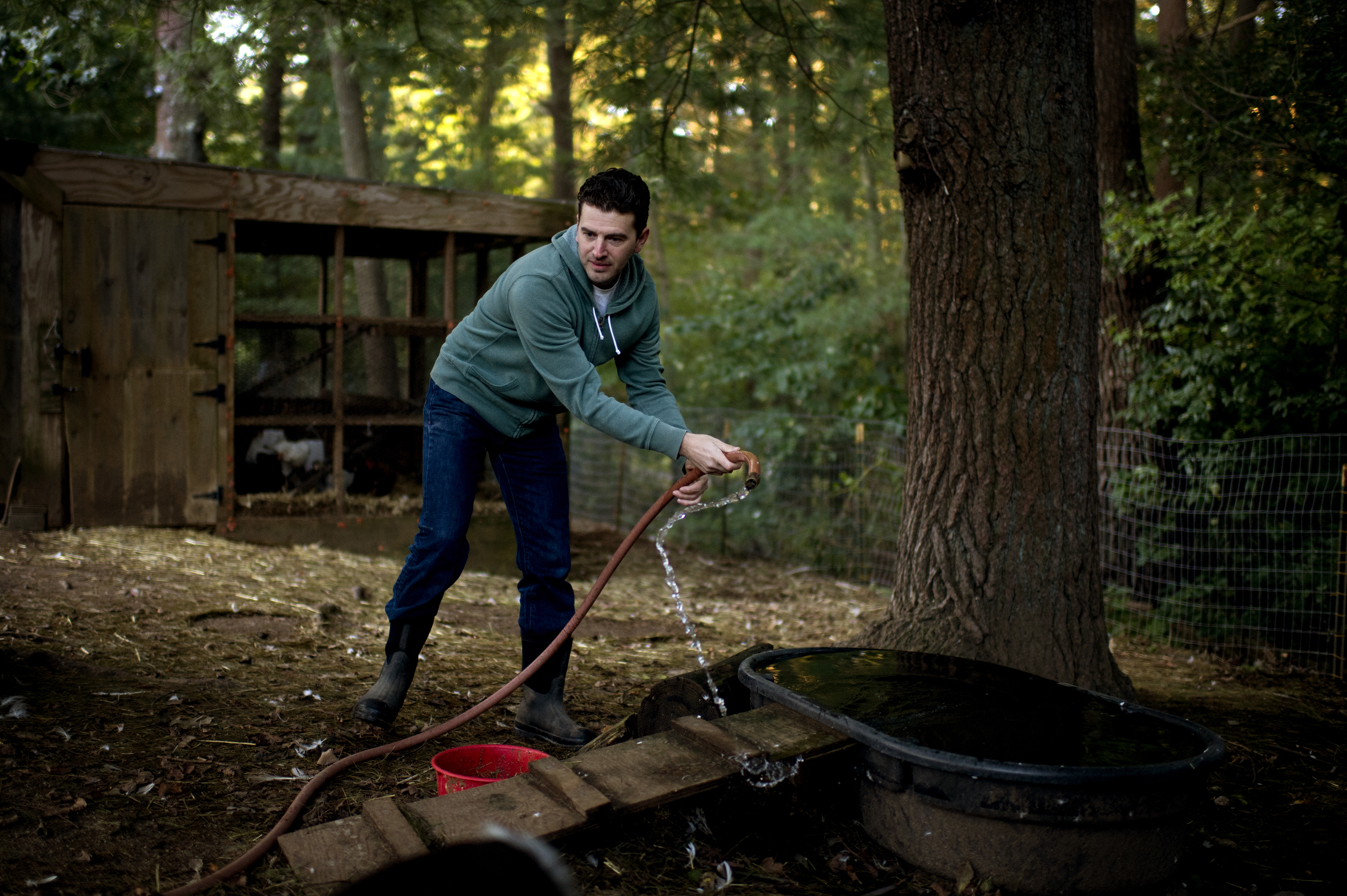
After learning that Penny was pregnant, they spent weeks preparing for the big day by watching YouTube videos and prepping a maternity kit. Moss says that on Sept. 4, they felt like it was time and spent much of the day with her, but nothing happened. Finally, they went in for dinner and were watching the U.S. Open around 11 p.m. when they heard some unfamiliar sounds outside. They went out and found Penny nursing Ruby and Lincoln. Moss says it was difficult not to be with her when she gave birth, but acknowledges she may have felt his nervous energy all day and held off until she was alone. “The more I think about it, that’s nature,” he says. “Nature figured it out. We were lucky because it doesn’t always go that smoothly. I’m reminded that we can’t really control things.”
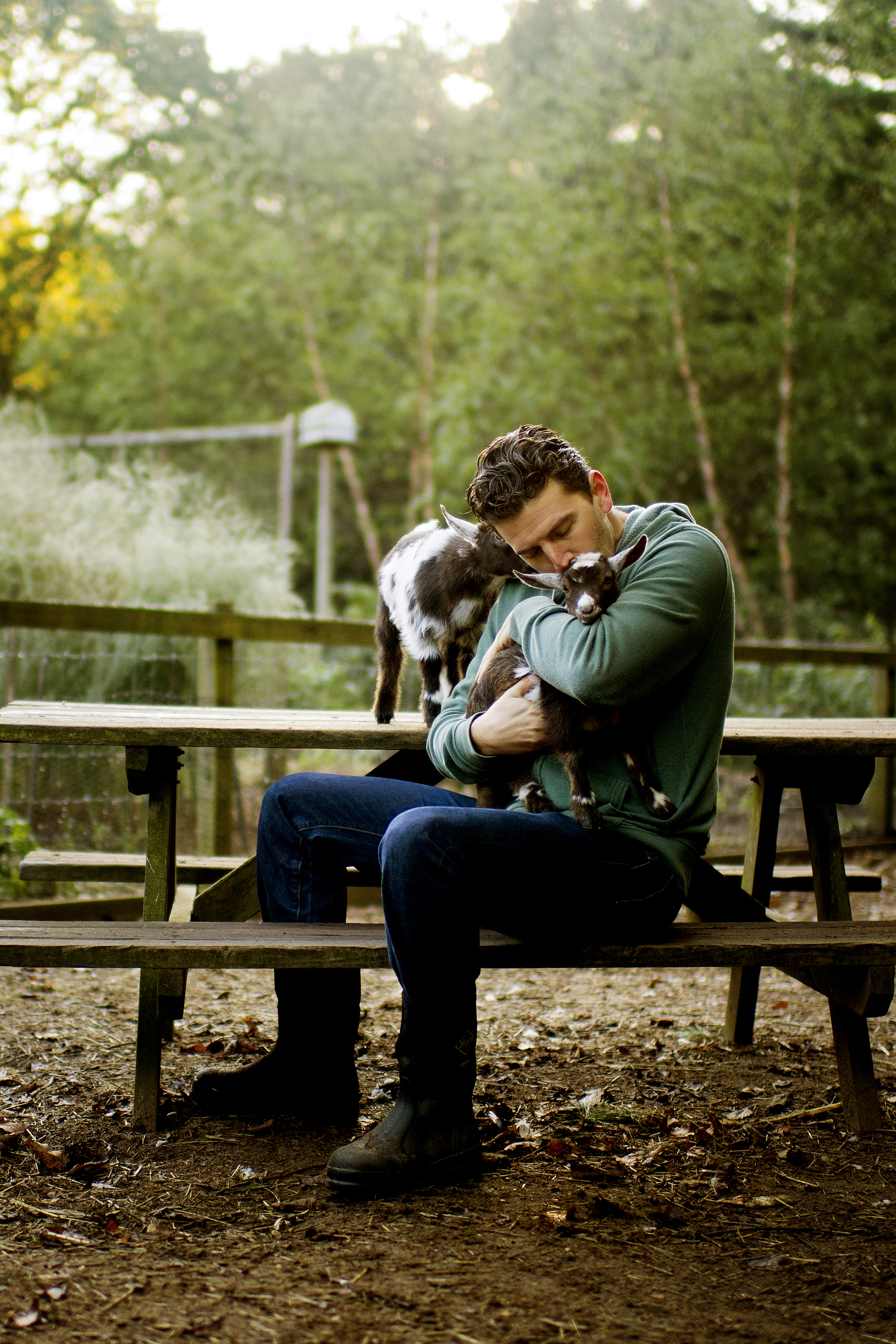
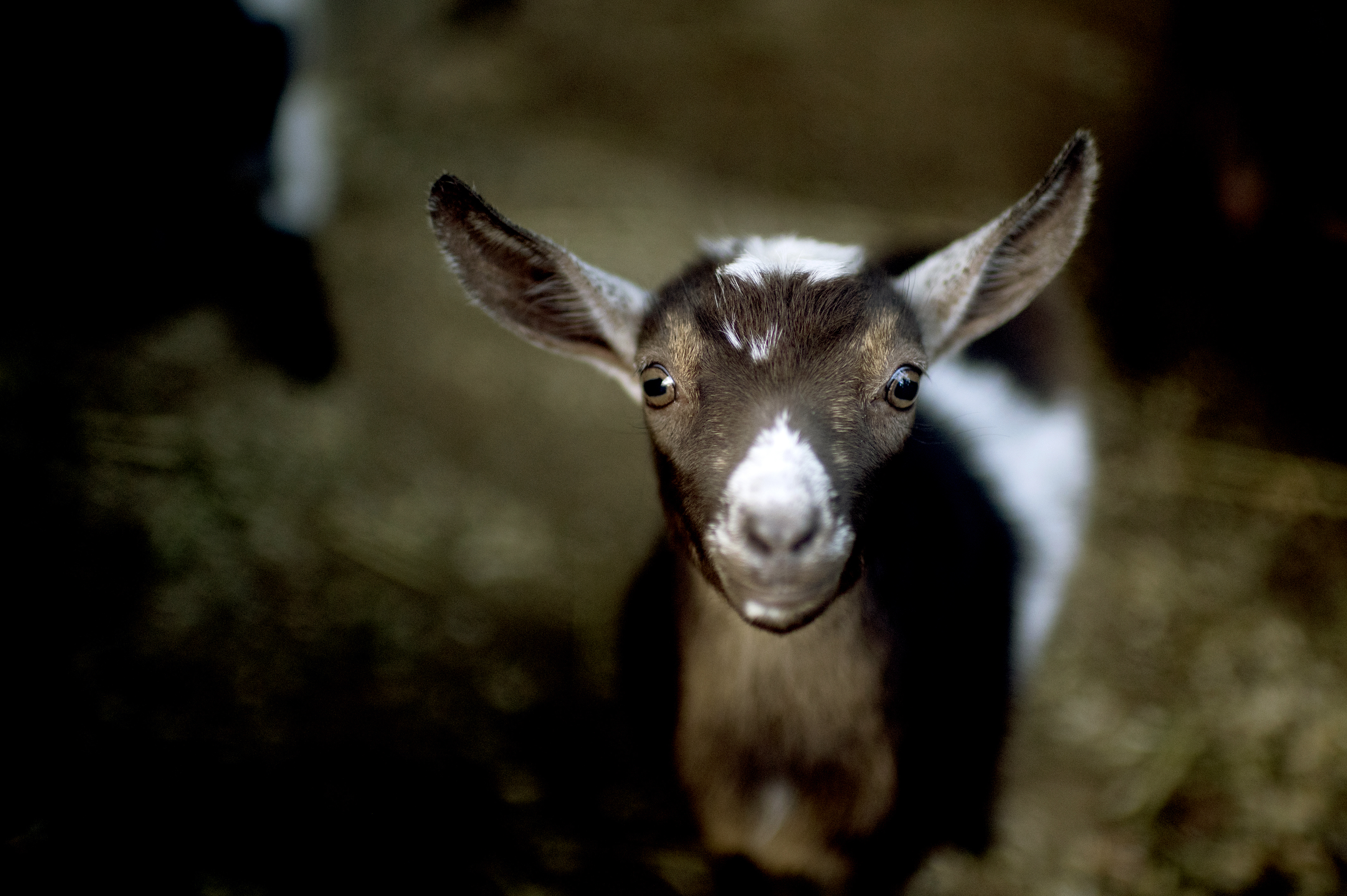
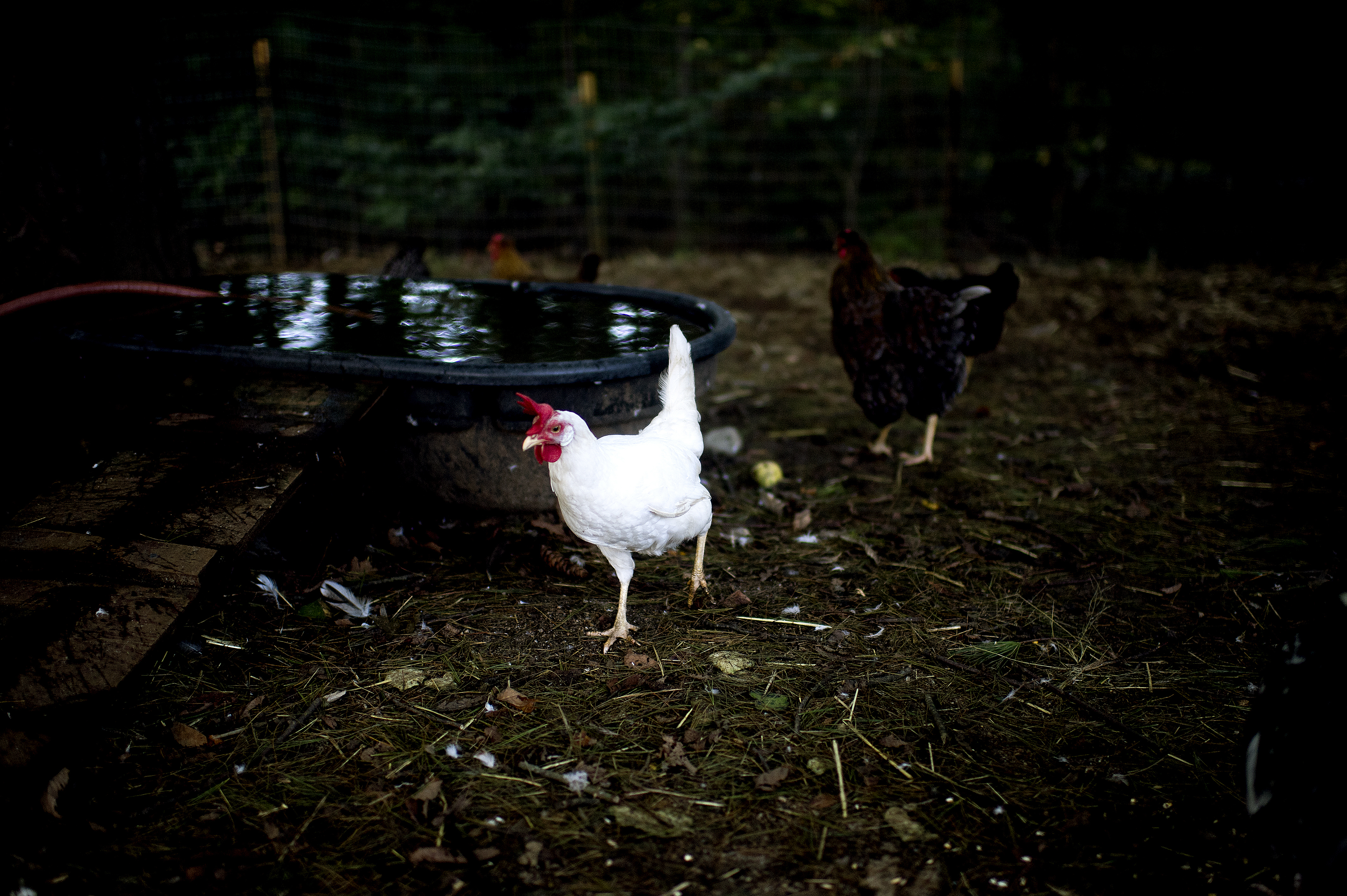
‘It feels like I don’t own the house. I’m its steward’
Moss joined Northeastern’s faculty in 2006, after earning his Master of Fine Arts from Emerson College. He became a full-time faculty member in 2013 and was promoted to associate teaching professor earlier this year. He teaches in the writing program and is running three courses this semester, including a new hybrid course on writing for business majors.
In the spring of 2014, Moss and Macke were living in Milton, Massachusetts, and looking to move to an antique house with more land. They had recently started beekeeping and had two hives, but had no idea that bees would become their “gateway animal,” as Moss puts it. Ironically, Moss didn’t learn until that fall that he was allergic to bees. “I got stung and had to go to the ER,” he says. “So I bee keep from afar now.”
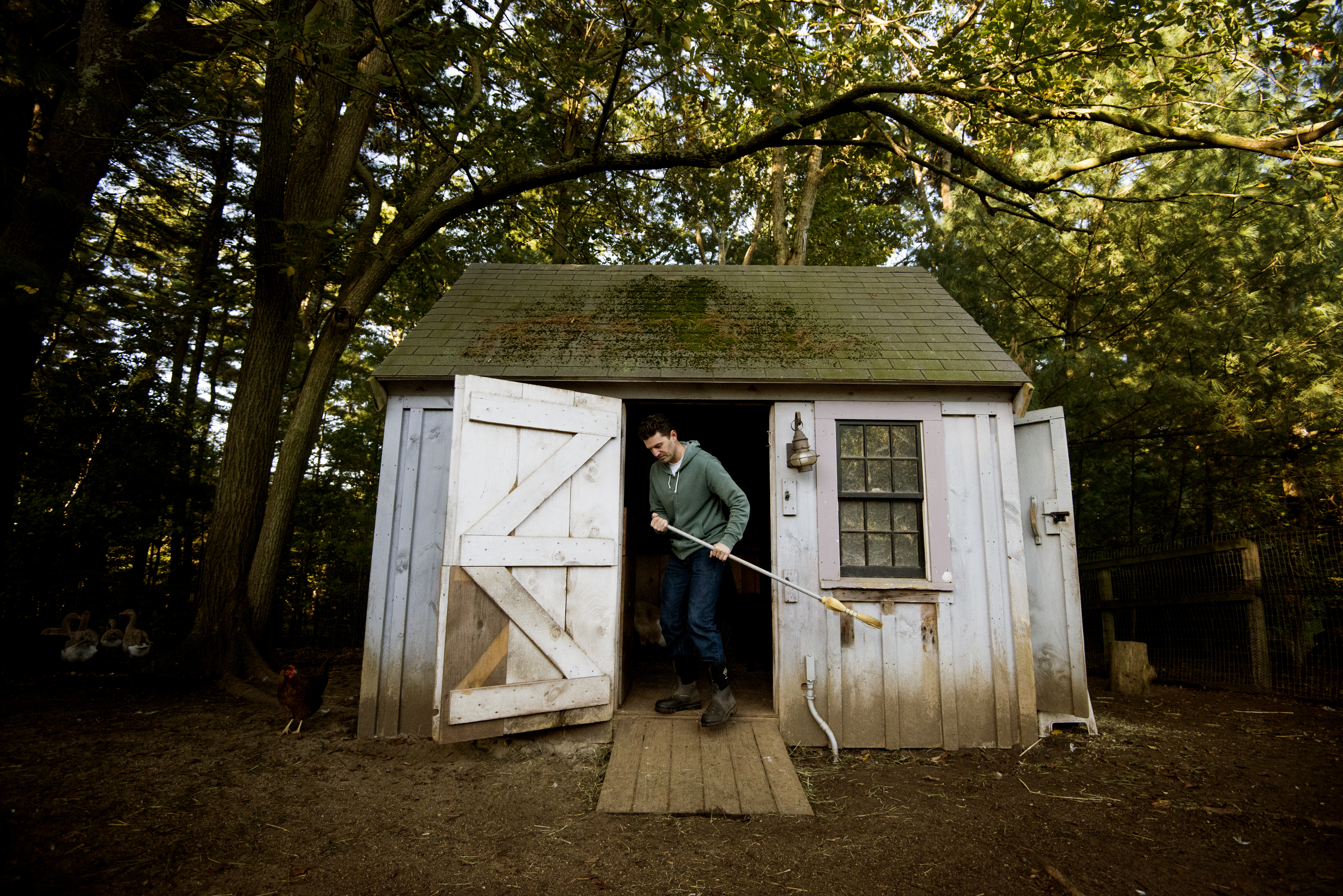
A friend suggested they look at one home in Hingham, but it wasn’t the right fit. Then the same friend suggested they look at another home, a New England half-cape on Gardner Street, known as Meadow Farm. They instantly connected with the property. “When we arrived at the house, we were amazed at what it was and what it could be,” Moss says. The home had been a farm since 2008, and the owner already had a large stock of animals Moss and Macke ultimately inherited.
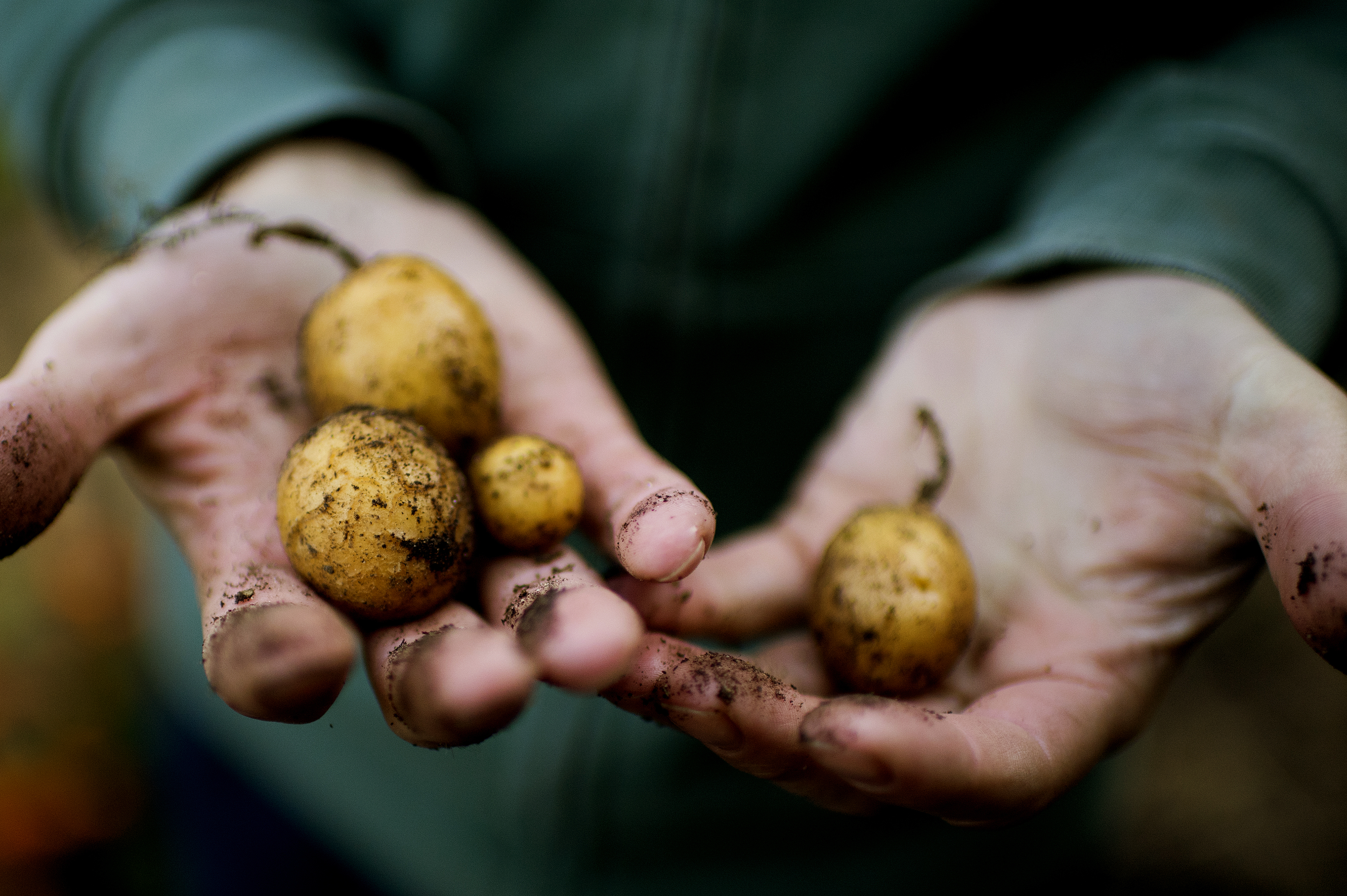
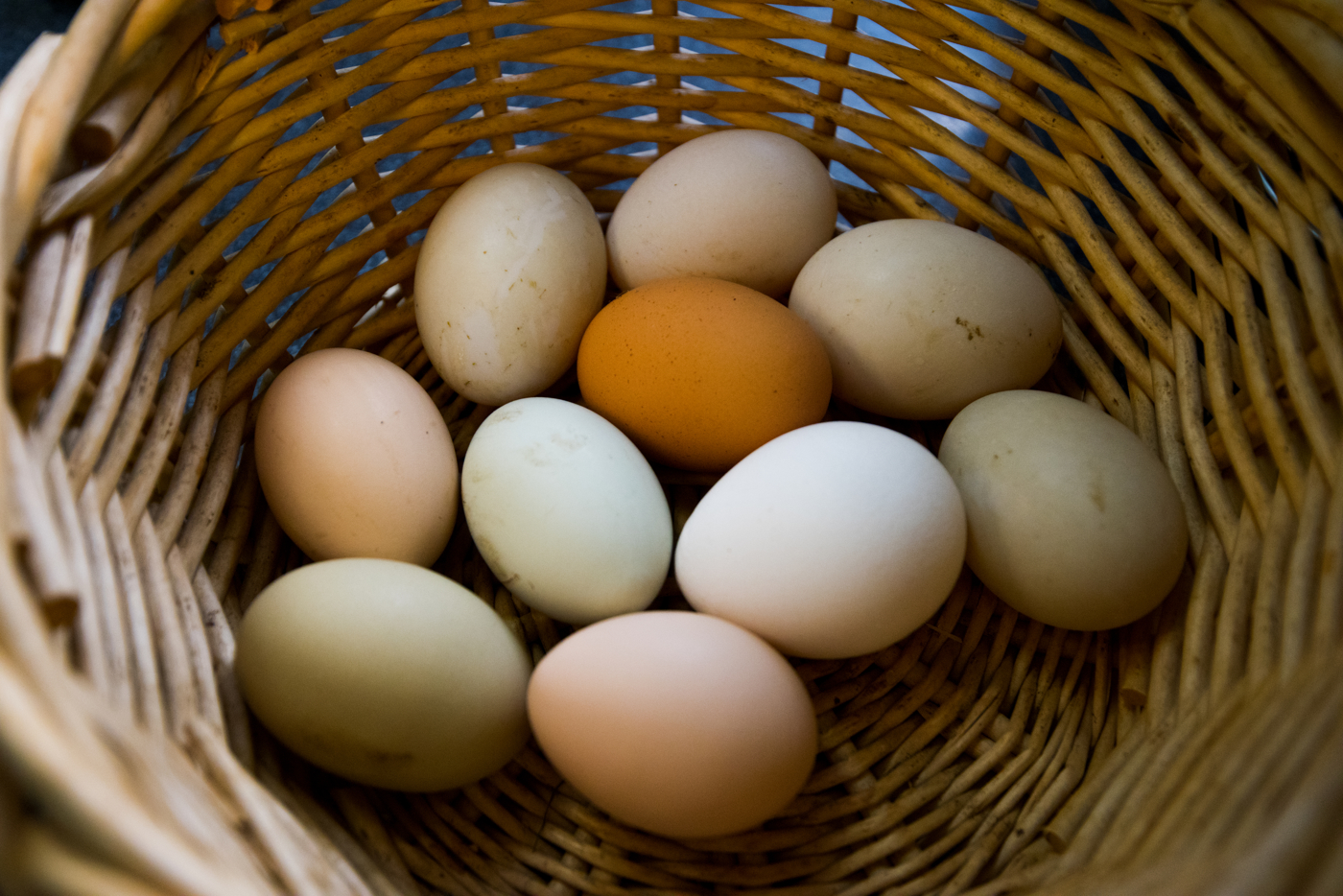
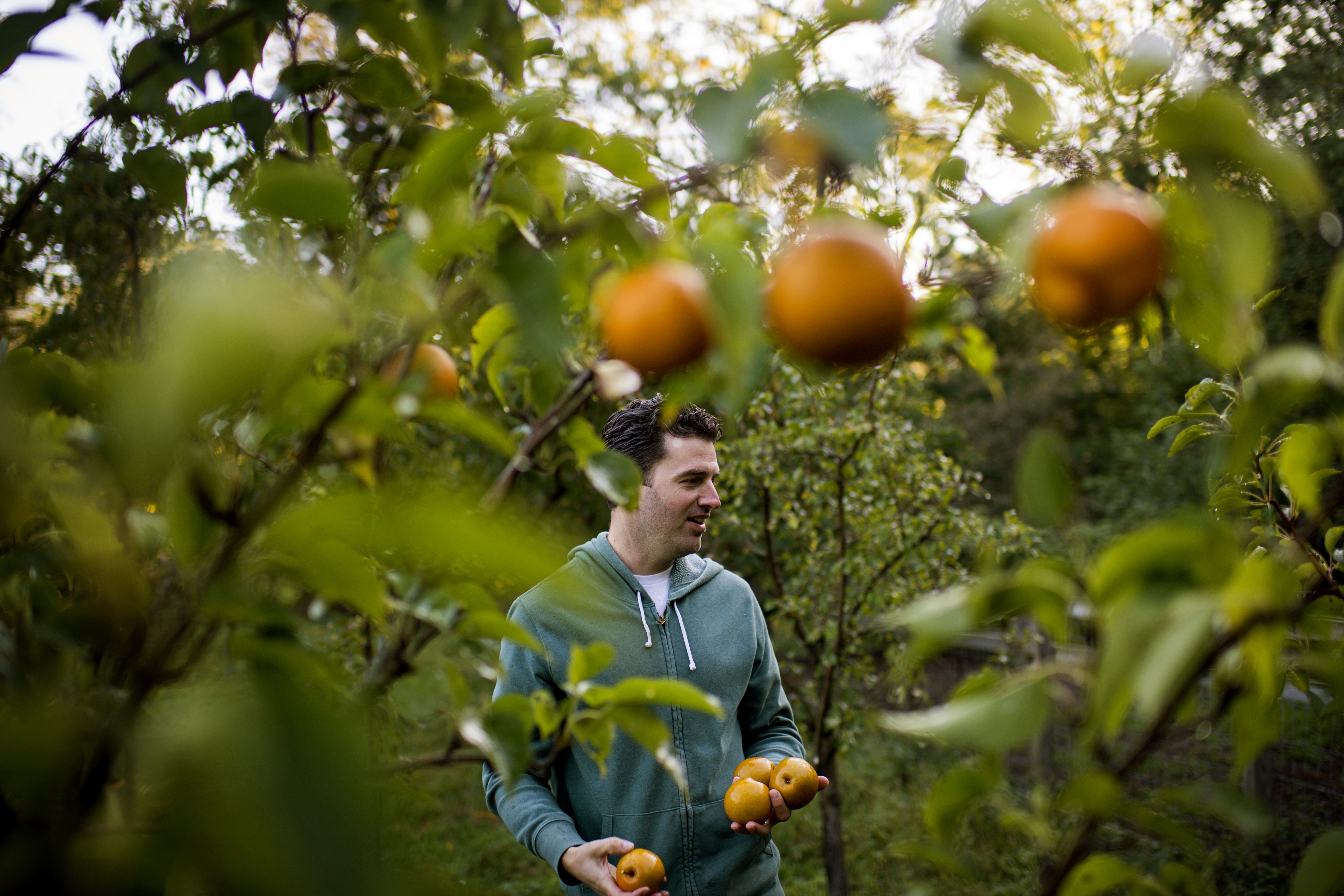
Moss says he and Macke were taken not only by the house but also by its history. It was built in 1776, and they liked the idea of following generations of families who had lived there. The previous owner even left them an old photo of the house, which they believe was taken in the early 1900s, with a chicken in the front yard. Ultimately, they realized they could never buy a newly-constructed house. This farm house in Hingham was the right place for them, one they could love and leave to others one day better than they found it.
“It feels bigger than us and that we’re the right people right now to make sure it survives for the next people who live here,” Moss says. “It feels like I don’t own the house. I’m its steward.”
